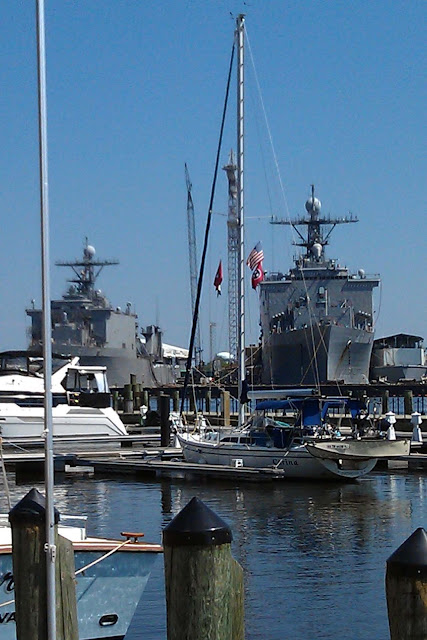. . . THE BRONX IS UP AND THE BATTERY'S DOWN
We'll vouch for it being a helluva town. After almost 4,000 miles and nine months to get here, including a three-month stall out in the Keys, we finally made it to New York City.
The view of Manhattan at the southern tip or the Battery. We'd always heard that Manhattan was an island between the Hudson River and the East River, but didn't know that the East River was partially man-made.
John, Great Kills Yacht Club harbor host, loaned us his MTA card to use on public transportation to reach the city. What made the biggest impression on Kent were the huge masses
of people and how efficiently public transportation moved them wherever they
needed to go.
For three days, we
took taxis, the Staten Island railroad, the free Staten Island ferry, and then
subways all over town.
A main transportation hub of Manhattan is Grand Central Station with subways and trains running constantly. Kent was amazed that the subway system was as much as three levels below the street, such as at Grand Central.
On second thought, public transportation made the second biggest impression.
The biggest impression was made by our Grayline Tours bus driver who managed to
navigate bumper-to-bumper New York traffic, moving around trucks and other
buses with just a hair's distance between them, and stay on schedule. Kent told
him it was worth the price of the ticket just to see him drive through Manhattan.
A few of the many places we visited were:
World Trade Center, 9/11 Site
The new World Trade
Center is nearing completion. The 9/11
Memorial, at its foot, draws somber, thoughtful crowds, as will the 9/11 Museum
when construction is done.
On the outside wall of
Fire Station No. 10, the first responders to 9/11, is this large plaque “dedicated
to those who fell and to those who carry on.”
South Street Seaport
The South Street Seaport
in lower Manhattan was hard hit by Hurricane Sandy with the Seaport Museum and
many businesses still being repaired.
The storm didn’t appear to damage the Seaport’s ships, like the Peking,
a huge commercial sailing ship built in 1911.
Central Park
Kent was impressed by
how Central Park seemed well planned, very well designed , yet appeared as
if nature made it that way. It was designed over 150 years ago by Frederick
Olmsted who later laid out the Biltmore Estate grounds near Asheville.
Empire State Building
The Empire State
Building was completed at the start of the Depression. The view from the 86th
floor showed us the Hudson River where we’d travel the next day.
Carnegie Deli
Our final meal in Manhattan was at the Carnegie Deli, home
of big New York food. We had a Bacon Whoopee sandwich (Jane lived to tell about it) and their Famous
Rueben sandwich (Kent). Each sandwich fed us for three meals. The photo doesn’t
do justice to their hugeness. Our entire table laughed when they were brought out. Of course, they ordered food just as large.




















































